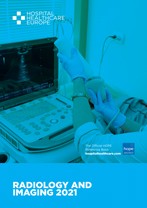CT pulmonary angiography (CTPA) is the preferred imaging modality to detect pulmonary embolism (PE) but whether D-dimer levels can guide selection for CTPA is uncertain.
Emerging evidence has indicated a high incidence of thromboembolic events, including pulmonary embolism (PE) in patients with COVID-19. Moreover, computed tomography pulmonary angiography (CTPA) is the current and preferred standard of care form of imaging to detect a PE. Nevertheless, the true incidence of PE in patients with COVID-19 remains to be determined and it is therefore unclear which patients should be referred for CTPA for diagnostic confirmation. While it has been suggested that the threshold for CTPA should be lowered, and based on grossly elevated D-dimer levels, the overall value of this approach requires further clarification.
Given this uncertainty, researchers from the Department of Radiology, Zuyderland Medical Centre, Geleen, The Netherlands, undertook a meta-analysis of the frequency of PE in patients with COVID-19 to determine whether D-dimer levels served as a useful guide to the selection of patients for CTPA. Using both MEDLINE and Embase, the researchers sought to identify studies which reported on the frequency of PE on CTPA scans in at least ten patients. Furthermore, the team manually searched for relevant articles in the journal Radiology: Cardiothoracic Imaging, which is not available via either MEDLINE or Embase. For identified studies, the researchers extracted data on the country of origin, location for testing, i.e., emergency department, general ward or intensive care unit, patient inclusion criteria, indications for CTPA (and who interpreted the results of the imaging) together with the location of the PE (i.e., main, lobar, segmental and subsegmental pulmonary arteries). In addition, mean values of D-dimer levels were also extracted and the authors contacted for these data if they were not in the published article.
Findings
A total of 71 studies were included in the meta-analysis. The overall frequency of PE in all studies among those with COVID-19 was 32.1% (95% CI 28.5–35.9%). PE was more common in peripheral than in main arteries, with pooled frequencies of 65.3% compared with 32.9%, which suggested that a local thrombosis was a major factor. Furthermore, the pooled frequencies of PE in patients with COVID-19 was lowest at the emergency department, followed by general wards and intensive care units: 17.9%, 23.9% and 48.6%, respectively. In 55 (77.5%) of the studies, patient selection for CTPA was reported and CTPA interpreters were blinded to clinical information in 15 (21.1%) of studies, although in the majority (76.1%) of studies, it was unclear whether interpreters were blinded to the clinical data. Among two studies where CTPA was used routinely (and without a clinical suspicion of PE), the frequency of PE was 2.1% and 5.7%. However, in two other studies where CTPA was routinely performed within the intensive care unit, again regardless of clinical suspicion, the reported PE frequencies were 47.2% and 60%.
Patients with COVID-19 and PE had significantly higher D-dimer levels than those without a PE and cut-off levels for D-dimer to identify those with a PE varied from 1000 to 4800mcg/l.
Commenting on their findings, the authors reported that since the reported incidence of PE was highest within the intensive care setting, it is likely that the condition is associated with more severe disease. In addition, most studies indicated that the criteria for CTPA were generally recorded as a clinically suspected PE. Furthermore, the presence of elevated D-dimer levels was considerably higher than the conventional cut-off value of 500mcg/l which is used to screen the general public for venous thromboembolism. They concluded that a D-dimer level of 1000mg/l might serve as an important guide to the selection of patients for CTPA.
Citation
Kwee RM et al. Pulmonary embolism in patients with COVID-19 and value of D-dimer assessment: a meta-analysis. Eur Radiol 2021;1–19.




